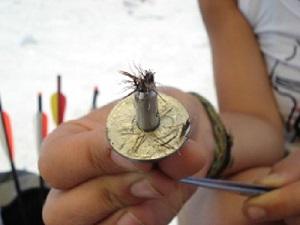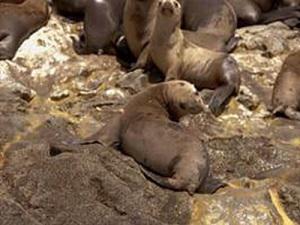Constanza Weinberger
This project aims to characterise the spatial distribution, genetic connectivity and environmental factors that may affect the distribution and dispersal patterns of the sea lion Otaria flavescens in Chile and carry out a viability metapopulation analysis for the species.

The biopsy dart with a sea lion fur sample.
Otaria flavescens is a common species in the Chilean coast. Currently, its extensive distribution and abundance produce conflicts with the fisheries, because they compete for the same resources. Due to the interference with fisheries, by mid last century the species was catalogue as "damaging" and was indiscriminately exploited until the species became almost extinct and began to be protected. This situation was repeated later again. At present, the sea lion exploitation in Chile is prohibited, but the fishery pressures and seal oil industry are mounting. Because of that, the government financed the execution of two complete censuses of the species along the country (between 1996 and 2000 and in 2006) to better estimate population size and its distribution in order to be able to define culling quotas.

Female sea lion getting a biopsy dart, north Chile.
However, this approach neglects temporal dynamics and is non-spatial. These insights led me to propose a metapopulation analysis for sea lions in order to carry out a spatial and viability analysis aimed at assessing connectivity and dispersal patterns and to identifying colonies that may be of importance for the long term persistence of the species. This project will provide key information on the spatial distribution of colonies abundance of individuals, as well as on the demographic and environmental factors that underlie this spatial distribution and the genetic connectivity and dispersal patterns among its populations. This information as a whole with the data of the censuses will permit to carry out a spatially explicit metapopulation analysis, inferring which colonies contribute the most to the persistence of the species in Chile. In addition our work will allow us to identify areas where to protect the species and where to minimize potential conflicts human activities (fisheries).